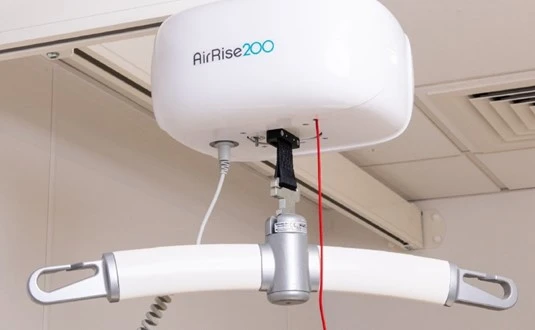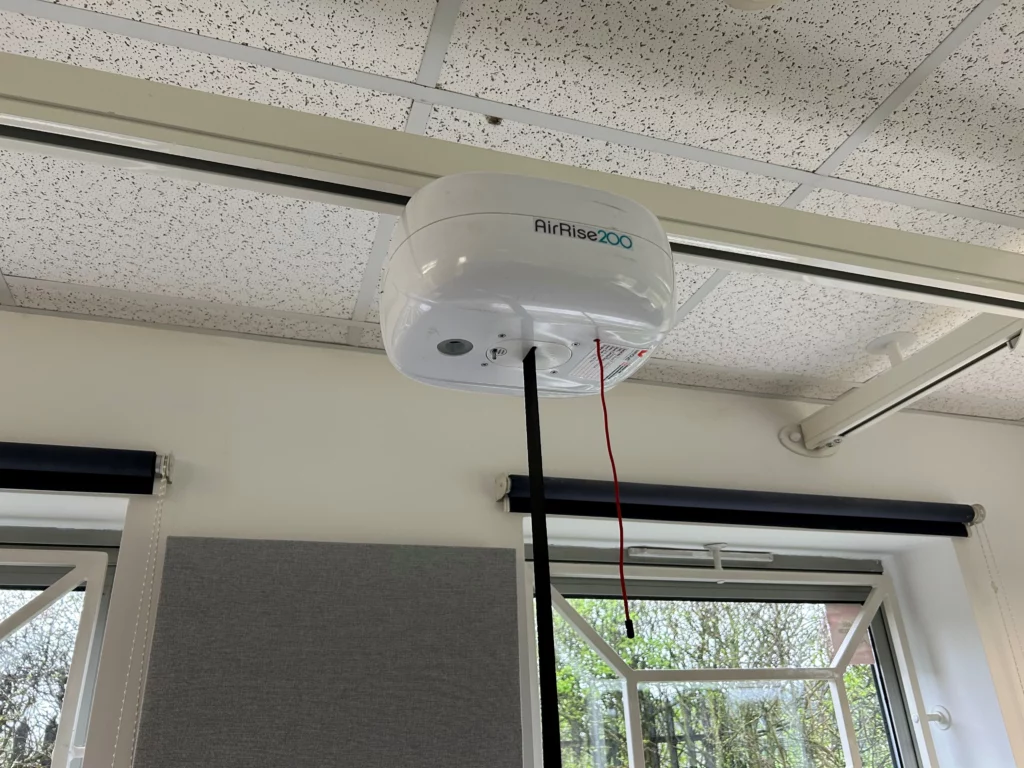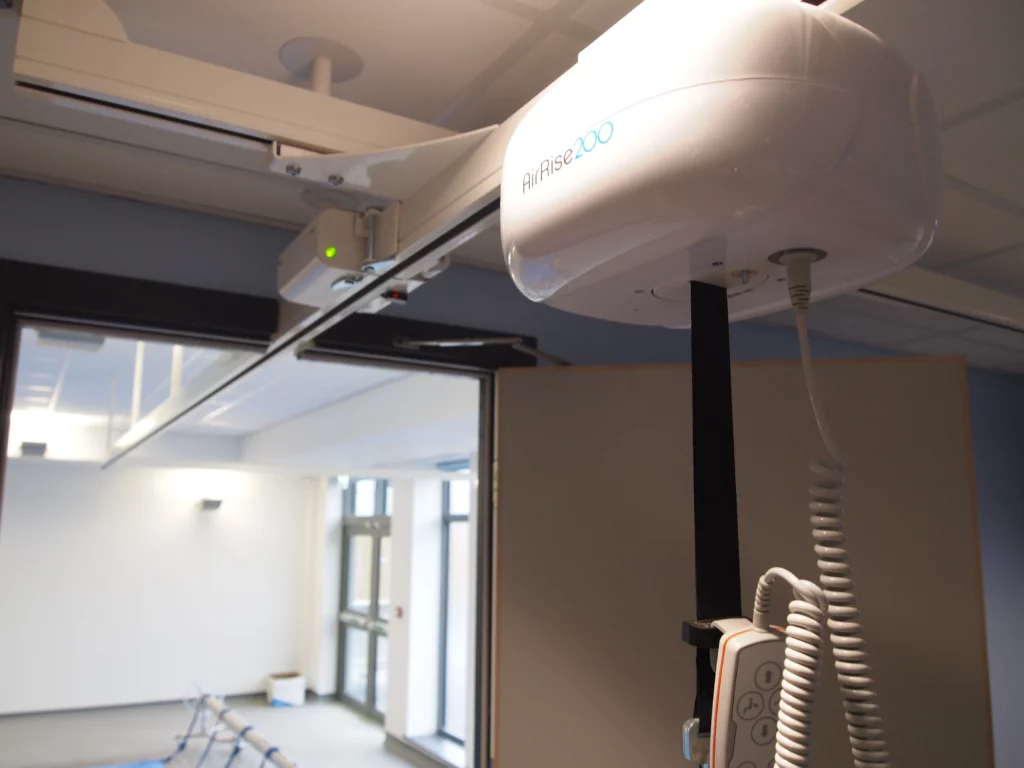What is a detachable hoist?
A detachable hoist, also sometimes referred to as a portable hoist, is a hoist that can be quickly removed from the ceiling track and transported to another location.
Unlike a fixed hoist unit, the detachable version is much lighter in weight and is designed to be east to move between locations.
In this blog, we’ll provide an overview on detachable hoists, talking about how it works and where are they mostly used.
Detachable hoist units – an overview
An overhead hoist system more often than not is a permanent installation into a home or multi-user environment. This piece of moving and handling equipment allows an individual, held in a sling, to be moved along a single or network of tracks between different areas and rooms.

However, rather than having fixed unit, some care professionals prefer to have a detachable or portable hoist unit.
This is often a preferred option for care homes and hospices, where not all the ceiling track systems are required all of the time.
With Innova, we offer a detachable version of the AirRise 200 hoist unit.
Just like the fixed version, the main specifications and features, such as charging times and weight limits, works exactly the same.
How do they work?
One of the biggest plus points with a portable hoist unit is how easy it is to attach and remove.
Whether it is a caretaker in an SEN School or nursing staff in a care home, they can quickly lock and unlock the unit from the trolley, and take it to a different location.
5 Things to Include in a SEN School Layout
Unlike a fixed hoist unit, a detachable hoist is simply pivoted and dropped into place on a ceiling track, with a trolley attached with wheels to enable the hoist to move along the track.
Easy as one, two, three, a portable hoist needs to be lifted, pivoted and dropped into place with a click notifying that it is in place and ready to use.
If the hoist isn’t seated correctly and is at an angle, the hoist will not engage.
This is beneficial for patient safety as it notifies staff the hoist hasn’t been locked into place and will emergency lower only.
Where are portable hoists used?
Portable hoist units are a cost-effective option for multi-user healthcare settings where not all the ceiling track systems are needed all the time.
For example, a care home that has 40 bedrooms with X-Y systems may not want to also have to cover the cost of buying 40 separate hoist units. Instead, they buy the hoist trolleys for each room to attach a portable unit, the track and 10 detachable units which can be used in different rooms.

Portable hoists are generally found in multi-user environments such as care homes, helping to reduce costs in comparison to installing fixed units.
Not only does this save on installation cost, it also saves on LOLER testing which needs to be carried out every 6 months. Portable units are also much easier to access making them easier to maintain.
Those who are looking for a home adaption and require hoisting may also look into a portable system. In cases where users and families don’t want to have a separate overhead hoist unit in every room, an option that is detachable can give them an alternative.
The fact that the system can be easily removed also makes it very easy to clean, helping improve infection prevention for different care environments and at home.
Where wouldn’t you use them?
In the past, many SEN schools have been sold detachable hoist units as they are easy to move between rooms as needed.
However, in an SEN environment or care environments that may require urgent hoist transfers during an emergency, we would advise to go for a fixed system.

We would always recommend having fixed hoist units in environments such as SEN Schools.
One of the main reasons why a portable unit isn’t always appropriate is that if you only have a few detachable hoist units, but have tracking in every room, you can’t perform a hoist transfer quickly in an emergency.
In cases during a fire drill, or a genuine evacuation, you don’t want to be in the position of having to find an available hoist unit before you can safely get children or patients out of a building.
That’s why we would advise in those particular settings to opt for a fixed hoisting unit, especially with an AirRise system, as it charges whenever you put the handset in its docking station.
This makes it easy to keep your hoist unit powered and ready to be used whenever needed.
Summary
In this blog we’ve given an overview of what detachable hoists are, where they are used and how they can be beneficial for particular care settings. There has also been guidance on where a fixed hoist unit maybe better suited, especially in SEN schools and acute care settings. See our blog for more info on how to choose the right ceiling hoist system.
If you require support on which hoisting system you need for your home or care environment, get in touch using the contact form below.
Other blogs you may be interested in
Different Types of Hoist Units
What makes healthcare equipment good for infection prevention?
What are ceiling hoists used for?
Can we help with anything?
Be sure to use the contact form and reach out to us if you have any questions about the content above.